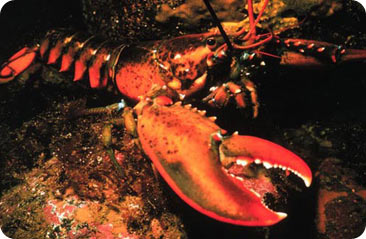190611-lobster.jpg

In the U.S., we generally eat American lobster. Credit:National Oceanic and Atmospheric Administration
You can only push a person so far. In the early Massachusetts colony, for example, indentured servants were so incensed at the diet provided by their masters that they demanded a change: they couldn’t be required to eat lobster more than three times a week.
Such is the nature of changing times and changing tastes. In the 17th and 18th centuries, lobster was sneered at -- it was used for fertilizer or bait, or fed to slaves, criminals, and servants.
Today, though, lobster is a delicacy, and lobstering is a multi-billion-dollar business.
Here in the U.S., we most frequently eat American lobster. It’s found from North Carolina to Labrador, usually at depths of up to about 150 feet. A typical adult male is one to two feet long, and weighs a few pounds. If it avoids the lobster traps, though, it can grow much larger, and live a hundred years or longer.
Lobsters prefer a rocky ocean floor, with plenty of hiding places. They stay in their burrows during the day and come out at night to feed. They use their two large claws to catch, crush, and slice into the shells of crabs, clams, and other prey.
During its first few years, a lobster replaces its shell every few months. Each time it molts, it grows quite a bit before forming a new shell. It may eat the old shell to supply enough calcium to generate a new one. It hides under a rocky ledge or in some other protected area while the new shell grows -- temporarily preventing it from becoming the bane of the indentured servant: a lobster dinner.

